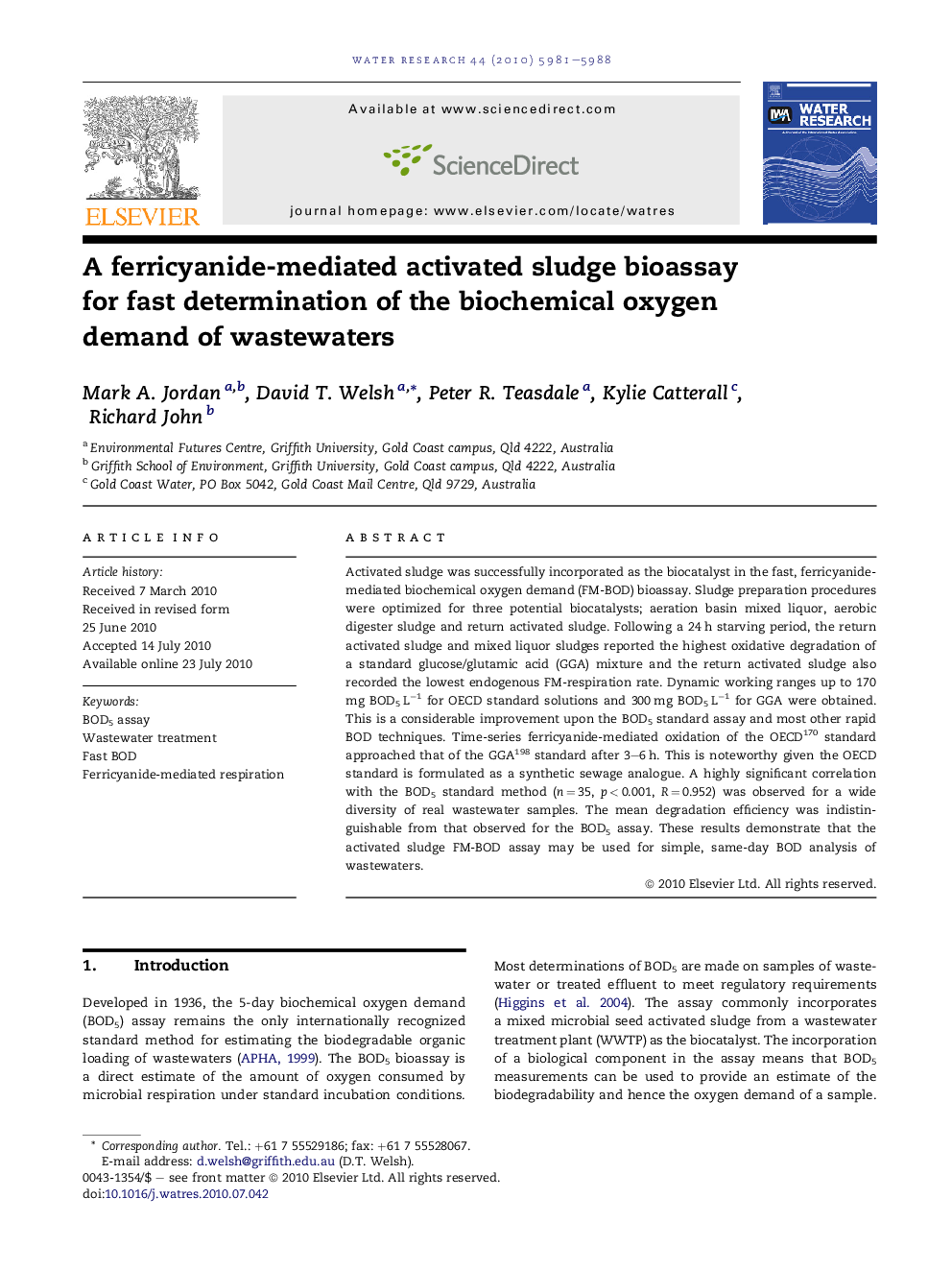| Article ID | Journal | Published Year | Pages | File Type |
|---|---|---|---|---|
| 4483687 | Water Research | 2010 | 8 Pages |
Abstract
Activated sludge was successfully incorporated as the biocatalyst in the fast, ferricyanide-mediated biochemical oxygen demand (FM-BOD) bioassay. Sludge preparation procedures were optimized for three potential biocatalysts; aeration basin mixed liquor, aerobic digester sludge and return activated sludge. Following a 24 h starving period, the return activated sludge and mixed liquor sludges reported the highest oxidative degradation of a standard glucose/glutamic acid (GGA) mixture and the return activated sludge also recorded the lowest endogenous FM-respiration rate. Dynamic working ranges up to 170 mg BOD5 Lâ1 for OECD standard solutions and 300 mg BOD5 Lâ1 for GGA were obtained. This is a considerable improvement upon the BOD5 standard assay and most other rapid BOD techniques. Time-series ferricyanide-mediated oxidation of the OECD170 standard approached that of the GGA198 standard after 3-6 h. This is noteworthy given the OECD standard is formulated as a synthetic sewage analogue. A highly significant correlation with the BOD5 standard method (n = 35, p < 0.001, R = 0.952) was observed for a wide diversity of real wastewater samples. The mean degradation efficiency was indistinguishable from that observed for the BOD5 assay. These results demonstrate that the activated sludge FM-BOD assay may be used for simple, same-day BOD analysis of wastewaters.
Keywords
Related Topics
Physical Sciences and Engineering
Earth and Planetary Sciences
Earth-Surface Processes
Authors
Mark A. Jordan, David T. Welsh, Peter R. Teasdale, Kylie Catterall, Richard John,
